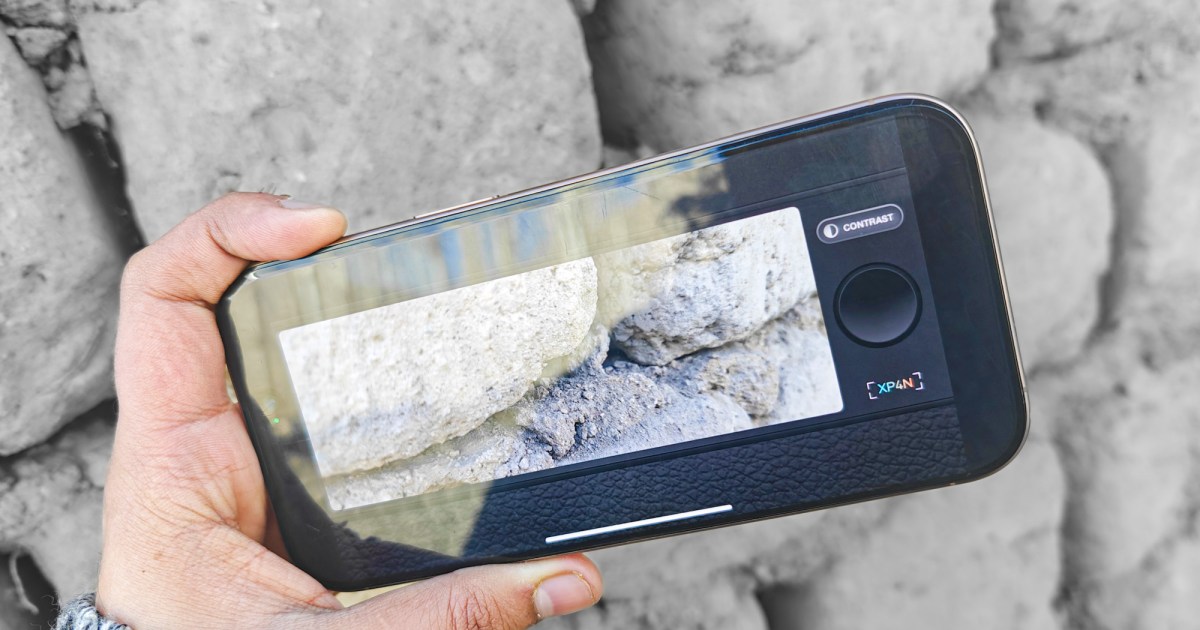I recently went on a photo journey without letting the iPhone’s camera processing “pollute” an otherwise pristine frame. The tool I used was Halide’s Process Zero, and the objective was to eliminate excessive sharpening, saturation adjustment, and exposure compensation.
The results, in their grainy and noisy glory, were a stark contrast from what the iPhone cameras produce. With a bit of basic editing, these unprocessed images took on a lovely cinematic character of their own.
I’ve got a soft spot for film cameras, especially their unique tint profile. Nothing exemplifies that preference quite like vintage Hasselblad cameras. Over the past few years, brands like OnePlus have worked with Hasselblad and offered the XPAN wide panorama mode on their phones.
With a bit of framing adjustment, it can produce stunning wide-format shots. Apple, despite all its well-supported claims of a powerhouse camera, has left the iPhones rather untouched by such artistic blessings.

That’s where XP4N comes into the picture. The brainchild of a veteran app developer, this app brings the signature 65:24 shots popularized by the Hasselblad XPAN camera to the iPhone. The app is refreshingly undemanding and offers a relatively simple interface.
“Every time I press the shutter, a movie still should come out,” notes Bram Bos, the mind behind the XP4N app. Interestingly, Bos tells Digital Trends that the app is a passion project that was built in spare time over weekends.
The results, however, tell a different story.
The best UI is a simple UI

One of the primary reasons I often turn to the stock iPhone camera app is the simplicity of taking out the phone and clicking a picture. When I need more granular controls, I look at Halide.
XP4N, despite being an app for the creative “mobigrapher,” takes a deliberately clean route to the user interface. You get a shutter button, a wide viewfinder, a film preset selection, and a slider for adjusting the exposure level.

You won’t need to fiddle with the latter in most cases. That’s just how rewarding the results are, all thanks to the lovely tuning out of the box. I absolutely love the approach, and it seems to be the creator’s goal, too.
“It needed to be really good at one thing: a point-and-shoot camera for Xpan-style cinematic film shots. The user’s only task with this app should be to think about the framing,” Bos tells me.

At some point, you might even feel the lack of controls somewhat limiting while you compose your shot. Bos tells me that the lack of controls is an intentional — and admittedly polarizing — choice, but he intends to keep things simple in the future.
The rule applies to adding features, as well as working on the user interface. “I will always do it in such a way that the interface remains simple and uncluttered. I’m not going to add a bunch of little buttons and sliders to the UI,” Bos adds.

What if you offload those granular controls to the physical button, specifically the Camera Control button on the iPhone 16 series phones, instead of making things look cluttered on the control? Bos is open to exploring the idea.
Bos, who has worked predominantly on iOS music apps, tells me it was not the development part that was tough. Getting the film output as close to the vintage Hasselblad XPAN feel was the real challenge.

Compared to a typical camera or photo-editing app, XP4N doesn’t offer much creative headroom. Bos is aware of the functional scarcity, and he intends to add newer options down the road, but not at the cost of functional ease.
Mixed results, but in a good way

Now, the results are not universally pleasing. Sometimes, you would prefer the extra dose of sharpness and contrast offered by the stock iPhone camera app, especially in lowlight scenarios. But at the end of the day, it would boil down to your definition of a “good picture.”
It also misses out on the fancy sensor-shift stabilization perks you can get in the stock camera app. As a result, the best action capture and night mode photography will elude you in the XP4N app. But that’s not always a bad thing.
Take a look at the laughing Buddha toys captured in a stall at night. One of the XP4N filters crushes the chroma details (top slide), the background colors, and the subject surface highlights. The frame only looks good with a soft monochrome filter or an amber color tone with light texture details.

On the flip side, the stock iPhone camera struggles with noise and grainy texture in lowlight scenarios. The XP4N tuning helps mask those shortcomings with subdued highlights and lower exposure, both of which combine to deliver a sharper-looking picture with an artistic tinge.
The general theme here is that the images you get from the XP4N camera will be lower in saturation and depth. Thankfully, tuning the six film presets more than makes up for it with standout results that would otherwise take a lot of hit-and-miss editing work.

Purists, especially fans of film photography and those with experience taking Hasselblads out for a ride, might find the results a bit off — or even a flawed recreation of something pristine. Bos isn’t concerned with the criticism because that was never the intention.
”The film looks are very much a rendition of what I personally find pleasing to look at, rather than full-on scientific simulations of an actual emulsion,” Bos tells me. Take a look at this comparison of a flower vase that I clicked in a dimly lit room.

In the picture clicked by the iPhone’s stock camera app, the algorithms superimposed low-exposure and high-exposure shots, corrected the colors, and performed aggressive noise isolation to give a detailed picture.
Many of those colors and details are not visible to the naked eye, and the reproduction is not accurate either. Now, compare them to the Hasselblad XPAN-inspired pictures and notice the color chemistry.
The pictures you get from the XP4N app are not as sharp, but the unique hue profile gives them a much more pleasing character. The most surprising part is that you don’t need to fiddle with any framing controls.

I asked Bos about the possibility of adding a few more film presets for some diversity. It seems that might happen down the road, but Bos didn’t give any concrete timeline for it. “I still intend to add something for capturing really vivid colorful scenes, but without making it garish and oversaturated,” he said.
As far as personal preference goes, I am in awe of the Gritty preset, which dials down the saturation, and gives a noir appeal to the pictures. I prefer the “Soft B&W” preset over the “Contrast B&W” because the former edges closer to the feel of vintage cameras, especially the slightly hazy results they produce.

Another perk of XP4N is for framing situations where you are struggling with harsh highlights or lack of light. The film filters do a really good job of giving a retro or artistic touch to those pictures.
In fact, a majority of the pictures I clicked with the app didn’t even require a manual focus. You can switch between regular, wide, and telephoto lenses in the app with a single tap on the viewfinder, but I mostly stuck to the main snapper.

Bos stresses that these film presets are not merely filters. They are dynamic and adjust the intensity based on the frame exposure. But in its bid to recreate the Hasselblad feel, the app doesn’t add artificial grain or haphazard light leaks.
The film presets might come out as a variation of camera filters at the end of the day, but that’s not really the case. Each film preset requires a deep understanding of what made the original film stand out, especially when it comes to adjusting subtleties like halation and tungsten compensation.
One of the best apps for the iPhone camera

If you are into street photography, especially urban landscapes with sharp lines, dimly lit alleys, and neon lights, the XP4N app will leave you mesmerized. In a span of one week, I’ve clicked more pictures using these film filters than I’ve clicked with the iPhone 16 Pro’s default camera since I purchased it on release day.
XP4N costs $1, and by a fair margin, it has been the most fulfilling purchase I’ve made from the App Store in years. If you need to add some vintage or cinematic pizzazz to your stills without jumping through too many technical hoops, this app is a low-cost, high-reward option.
You can download the XP4N app from the App Store now.
Read the full article here














